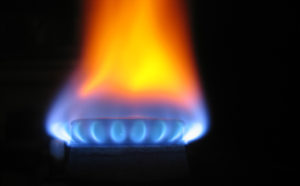 Natural gas was little changed on Thursday as investors braced for a supply report that will likely show US natural gas stockpiles exceeded the five-year average for the first time since 2013. However, forecasts for colder-than-usual weather across the eastern, northern and portions of the central US kept the market poised for more upside movement.
Natural gas was little changed on Thursday as investors braced for a supply report that will likely show US natural gas stockpiles exceeded the five-year average for the first time since 2013. However, forecasts for colder-than-usual weather across the eastern, northern and portions of the central US kept the market poised for more upside movement.
Natural gas for delivery in March traded 0.25% higher at $2.838 per million British thermal units at 9:37 GMT, having shifted in a daily range of $2.858-$2.810. The contract rose 2.6% on Wednesday to $2.831. Prices are up ~1.3% for the week so far.
The Energy Information Administration is likely to report at 15:30 GMT that US natural gas inventories fell by 105-111 bcf in the week ended February 13th, compared to the five-year average decline of 180 bcf. If confirmed, this would bring stockpiles to 60-70 bcf above average levels, the first surplus since 2013. Stocks slid by 247 bcf during the comparable period a year earlier.
However, next week’s report is expected to show an inventory decline well above the normal, probably over -200 bcf, as this week’s cold outbreak across the eastern, northern and parts of the central US spur very strong heating demand. If, as forecast, reinforcing cold blasts follow this weekend and next week, this would line up another significant inventory decline for the following week as average withdrawals fall steeply, bearing the potential to bring inventories back to ~100 bcf deficits through the end of the month.
The EIA reported last Thursday that US natural gas stockpiles fell by 160 billion cubic feet in the week ended February 6th. Total gas held in US storage hubs amounted to 2.268 trillion cubic feet, narrowing the deficit to the five-year average of 2.279 trillion to 0.5% from 1.2% a week earlier. The surplus to the year-ago storage of 1.726 trillion cubic feet expanded to 31.4% from 23.9% during the preceding period.
Bullish weather developments are likely to keep the market from falling too steep later in the day as the allegedly small inventory drop is largely factored in.
According to NatGasWeather.com, natural gas demand in the US will be very high compared to normal through February 25th, with a neutral weather trend over the West during the following seven days, while the east remains cool.
Cold blasts
The eastern US remains in the grip of a strong polar blast that has pushed into the Southeast as well, bringing widespread lows in the single digits and below zero as south as the Tennessee Valley. A more impressive winter storm will develop over the northern and eastern US on Saturday, bringing heavy snow accumulations over the East Coast. Meanwhile, widespread warmth across the West will help break records as highs range between the upper 60s and lower 80s.
Additional cold weather systems will arrive to the north-eastern US late this weekend, keeping temperatures across the Southeast below the freezing point as well, and will continue to track through during next week, inducing strong national heating demand.
The south-central US will also see some cooling, but will remain mostly near normal as the truly frigid air remains confined to the Northeast and Great Lakes. The West will continue to enjoy near or warmer-than-usual weather through the end of the month.
A notable change in weather patterns may come in early March when cold blasts across the East ease, paving the way for the return of mild weather, while Pacific systems hit the West with cooler conditions.
Temperatures
According to AccuWeather.com, readings in New York on February 21st will range between 33 and 35 degrees Fahrenheit, compared to the average 30-43, and will shift between 19 and 27 degrees three days later. Highs will firmly establish above the freezing point after February 28th. Chicago will range between -2 and 6 degrees today, compared to the average of 23-37, and will see readings bottom at 3 degrees on February 23rd before slightly warming up through the rest of February. However, highs will not find stable ground above the freezing point before March 5th.
Down South, Houston will range between 64 and 72 degrees tomorrow, compared to the average 50-67, and apart from the February 23rd-26th period, will experience normal or slightly cooler readings through March 2nd. On the West Coast, Los Angeles will enjoy mostly seasonal weather throughout February, with readings set to range today between 54 and 70 degrees, compared to the average 50-69.
Pivot points
According to Binary Tribune’s daily analysis, March natural gas futures’ central pivot point stands at $2.801. In case the contract penetrates the first resistance level at $2.871 per million British thermal units, it will encounter next resistance at $2.910. If breached, upside movement may attempt to advance to $2.980 per mBtu.
If the energy source drops below its first support level at $2.762 per mBtu, it will next see support at $2.692. If the second key support zone is breached, the power-station fuel’s downward movement may extend to $2.653 per mBtu.
In weekly terms, the central pivot point is at $2.753. The three key resistance levels are as follows: R1 – $2.934, R2 – $3.065, R3 – $3.246. The three key support levels are: S1 – $2.622, S2 – $2.441, S3 – $2.310.





